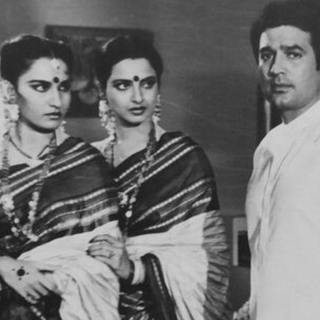
Why Do Heist Shows, Movies Appeal To Us?
From “Robin Hood” to “Lupin,” the heist genre packs anti-capitalist themes, offers a thrilling chase, and is aspirational in nature.

Netflix’s runaway hit Lupin, a French series centering a series of heists, released its second season last week to fanfare. In January, the series became Netflix’s second most-watched original show since 2019; an intrigued audience was quick to compare the show’s success with Money Heist or La Casa de Papel, the Spanish show that has acted as a paragon for cinematic burglary in recent times. But the premise these shows follow is by no means a modern creation — it falls within the heist genre that has capitalized on a formulaic goldmine for years. Think Asphalt Jungle in the 1950s to Ocean’s Eleven (2001), Italian Job (2003), Inception (2010), and Logan Lucky (2017) in recent years. The fascination has endured decades and across screen formats, so one wonders what is it about centering an entire film on a heist that fascinates us.
Besides the fact that ambitious thefts and wild plot twists lend themselves to quality entertainment, the appeal of the cinematic theft stems from four reasons: one, skillful action that is cathartic to watch; two, there is a neatness in their structure that gives the audience what they expect; three, allowing audiences to live vicariously through criminals; and four, anti-capitalist themes that resonate with the modern era.
Part of the thrill lies in the appeal of laying witness to carefully structured action, with a strict insistence on competition and almost surgical precision. There is hardly anything accidental about a heist — the orchestrators rarely stumble or do “stupid” things.
“Watching heist films has a lot to do with the pleasure derived from observing people act with expertise and in skillful ways. In this, the genre borders most closely on the dance musical and the sports film,” Julian Hanich, associate professor of film studies at the University of Groningen in the Netherlands, writes in “On Pros and Cons and Bills and Gates: The Heist Film as Pleasure.” Even though the gunshots and actions trigger chaos and violence, the burglars themselves are deliberate and exact. Hanich describes this as triggering “kinaesthetic empathy,” where watching “a group of gangsters, crooks or burglars commit a complicated theft through precisely coordinated actions and skillful collaboration” stokes our watchful appeal.
Related on The Swaddle:
Why Do True Crime Stories Fascinate Us?
This neatness aligns with the deliberate craft of the heist structure. There’s a three-act formula to most shows and movies in the genre — planning the heist (gritty scenes of sitting in The Professor’s class), unfolding of the heist (hijacking train operations or infiltrating into banks and museums played to the montage of cool music), and consequences of the heist (police chase or long-drawn investigations). The protagonists occupy well-defined roles — the mastermind, the organizer, the hacker, the pickpocket, muscle man, driver, and so on. The perception is that of a “functioning, well-oiled machine of social cooperation,” Hanich argues, where mutual understanding triggers a synchronized social flow, as if they are “making music together.”
Arguably, the formula has worked in the genre’s favor since the 1930s. But what makes the plot really sing is the intricate nuances — a twist, a detail missed, a sleight of the hand gone unnoticed; so while the plot follows a series of events, what those events will look like keeps evolving. Recent versions of heist cinema present a twist by adding elements of comedy — allowing us to laugh at the absurdity of some goofy individuals attempting to pull off such a massive robbery. But while these are transgressions, they are not jarring or contrasting enough to leave us perplexed. This becomes a sign of strength for the film — where it starts within its habitat of expectation but manages to entice us ever so slightly. “One goes to any individual example of the type with very definite expectations, and originality is to be welcomed only in the degree that it intensifies the expected experience without fundamentally altering it,” American author Robert Warshow once wrote about the gangster film, something that rings true about the heist film as well. They trick us ever so slightly, and we enjoy it — because we see it coming.
Which also segues into another reason — the aspirational nature of this cinema. Heists are rooted in deception and, as audience members, we find ourselves behind the scenes of elaborate plans, in on how things will pan out minute-by-minute. Besides becoming complicit in the crime, the feeling of knowing and being in the loop to this grand mastery at play satisfies an intrigued viewer.
“The heist films permit us to live vicariously as criminals: exciting risk-takers who break the law without hurting anyone. This victimlessness – or as close to it as possible – is crucial in the mythologizing of a heist” Duncan Campbell, a journalist who covered the Hatton Garden burglary in detail for The Guardian, told Shortlist. Deep within us, we want to be part of the heist ourselves.
Related on The Swaddle:
Feminist Filmmakers Are Reinventing Horror Cinema
Perhaps another reason we romanticize heist stories is that we’re drawn to people who break rules. “Every character in any movie is more fascinating when they’re flawed,” Ed Palattella, who has written about American bank robberies, told Shortlist.
“In a lot of cases, the audience identifies with the bank robbers more than they identify with the people who are trying to catch them. You look at Bonnie and Clyde: in real life, they were pretty cold-blooded killers and robbed some banks but mainly convenience stores. But the movie Bonnie and Clyde makes them out to be counter-cultural antiheroes. They’re more sympathetic than the people who are chasing them,” Palatttella adds.
And while these factors engineer a failsafe success to the heist genre, what assures resonance is the plot itself dazzling with anti-capitalist undertones. The joy of burglary is in watching the relocation of wealth, where the “anti-heroes” who have been defeated by life or cheated by systemic inadequacies work together to set things right — not just for themselves but also for other system’s other hostages. Think Lupin, where Assane Diop, as the son of a Senegalese immigrant, uses his skillset to avenge the working-class in the shadow of a powerful French dynasty.
“There is something about the modern era that makes viewers relish seeing wealthy people and institutions receive their comeuppance,” Adam Epstein writes in Quartz. In Money Heist, for instance, the thieves disrupt the locus of economic power in Spain, getting one over the authorities. This Robin Hood aesthetic finds a rabid audience everywhere; stealing from people who can bear the blow is a crucial element to keeping the audience on their side.
As Hanich explains in the paper, “the money, the gems, the gold, the artworks are hidden, stowed away, and protected in banks, casinos, museums, jewelry stores, or race-track vaults,” all of which echo a real-life desire to extract social justice.
Recent hits, backed by a premise that strikes all the right chords, have cemented the heist story as one of the most beloved subgenres of the crime narrative. As Jade Budowski sums it up in Decider: “It’s likely that plot twists, shoot-outs, backstabbing, and quippy one-liners will never go out of style – and that’s probably why the heist movie won’t either.”
Saumya Kalia is an Associate Editor at The Swaddle. Her journalism and writing explore issues of social justice, digital sub-cultures, media ecosystem, literature, and memory as they cut across socio-cultural periods. You can reach her at @Saumya_Kalia.
Related


The Buzz Cut: We Love to Hate On Dating Apps, But Will Old‑Fashioned “Meet‑Cutes” Make A Comeback?
